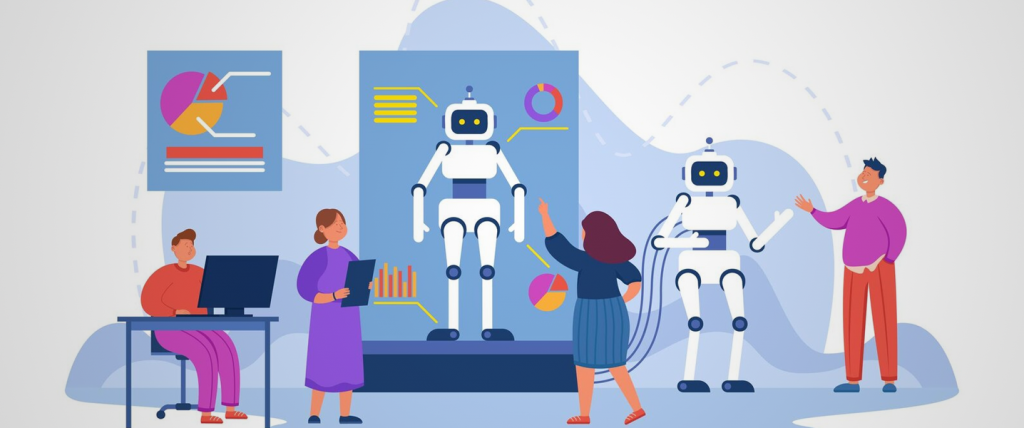Insights
AI in courtrooms and how it will change the landscape of litigation
May 14, 2025Artificial Intelligence (“AI”) needs no introduction today. Every part of our lives is influenced by AI in some form. Keeping up with this pace, in March 2025, in response to a question in Parliament, the Union Minister of State for Law and Justice, Mr Arjun Ram Meghwal, informed the Rajya Sabha that the Supreme Court of India had begun integrating AI and Machine Learning (“ML”) tools into case management, transcription, and translation processes to make legal proceedings faster and more efficient.

This statement comes at a time when the Supreme Court (and other Indian courts) are using AI and ML tools for real-time transcription of oral arguments in Constitution Bench matters and translation of judgments from English to 18 Indian languages. This article outlines the growing popularity of AI in Indian courtrooms and its impact on a traditionally conventional litigation system.
Read More+
AI and ML in Indian Courtrooms Today
Since 2019, the Supreme Court’s Artificial Intelligence Committee (“AIC”) has been exploring AI applications for translation, legal research assistance, and process automation.
In November 2019, then Chief Justice of India, HMJ Sharad Arvind Bobde, launched the Supreme Court Vidhik Anuvaad Software (“SUVAS”), developed to translate judicial documents between English and vernacular languages. In 2023, the Supreme Court used SUVAS to translate over 31,000 of its 36,000 judgments into scheduled languages, now available on the e-SCR portal. High Courts such as Kerala, Gujarat, and Karnataka followed suit, making judgments accessible in regional languages and supporting wider access to justice.
Another innovation is the Supreme Court Portal for Assistance in Court Efficiency (“SUPACE”), introduced in April 2021 by then CJI Bobde. SUPACE uses AI to extract facts, legal provisions, and case laws to assist judges with relevant material for ongoing cases.
The Court has also collaborated with the Indian Institute of Technology, Madras to develop tools integrated into the e-filing software of the Registry. These tools aim to identify filing defects automatically—an often tedious task for practitioners—and streamline the listing process.
Indian courts are not only developing but actively using these tools. In February 2023, the Supreme Court used AI to transcribe proceedings before the Constitution Bench. However, it is consistently clarified by the courts and government that AI and ML do not influence judicial decision-making.
In an interesting development, the Punjab and Haryana High Court, while considering a bail application, used ChatGPT to provide a general overview of global bail jurisprudence. The Court noted that this was not a comment on the case’s merits but a broader contextual reference, showing that AI has indeed entered the Indian courtroom.
Global Practices and Their Impact on Litigation
Globally, AI’s role in judicial systems is growing. In September 2023, the Supreme Courts of India and Singapore signed two Memorandums of Understanding to promote access to justice through technology.
China launched cyber courts in 2017, using AI judges to handle e-commerce, online services, and intellectual property disputes.
In 2016, researchers at University College London, University of Pennsylvania, and University of Sheffield developed an AI tool that could predict case outcomes with 79% accuracy based on the language used in previous judgments.
Germany’s judiciary employs an AI assistant called OLGA at the Stuttgart Higher Regional Court, helping with case categorisation and metadata extraction. This initiative has reduced case processing times by over 50%.
Globally popular AI tools like Premonition, Lex Machina, and LexisNexis are transforming legal research. Indian equivalents include SCC OnLine, Manupatra, LegitQuest, Adalat AI, and Bharat Law AI, which enable faster and more comprehensive legal research compared to manual methods.
The Way Forward in India
Beyond judiciary-led efforts, the Indian government has actively promoted AI in the legal system. The E-Courts Mission Mode Project, launched in 2007, continues to evolve. Phase-III of the project, running from 2023 to 2027, has been allocated ₹7,210 crore. Of this, ₹53.57 crore is earmarked for “Future Technological Advancement,” including the development of AI systems to support data-driven scheduling and prioritisation of cases.
This investment confirms the judiciary’s belief in the transformative potential of AI.
Challenges Ahead
Despite its benefits, AI adoption in Indian courtrooms faces challenges.
One major issue is the high cost of development and maintenance. AI systems require substantial investment and must be updated regularly to reflect changes in law. While these tools are powerful, they may not be affordable or accessible for all lawyers, particularly those in smaller practices or rural areas.
There is also a lack of formal guidelines on the use of AI in the legal system. Crucial questions remain about preventing unfair advantage, ensuring transparency, and regulating data usage.
Concerns about AI bias are also valid. During a recent hearing, HMJ Surya Kant Sharma rightly noted that AI is subject to human-created biases. Without proper regulation, this could lead to skewed or even unlawful outcomes.
Confidentiality and data privacy pose further issues. AI systems rely on large volumes of data, including sensitive personal and financial information. This data may need to be redacted before use, which can affect the output’s reliability.
Conclusion
In theory, AI can significantly improve the efficiency of legal proceedings and assist all stakeholders. However, successful implementation requires a deeper understanding of how to use these tools, mitigate misuse, and expand access beyond Supreme and High Courts to include district courts and grassroots legal practitioners.
The integration of AI in litigation is not a small undertaking. It demands careful planning, a phased execution roadmap, and cooperation among multiple stakeholders. Yet, where we stand today, the direction is promising—and progress is being made with purpose.
This article was originally published in Money Control on 14 May 2025 Co-written by: Smarika Singh, Partner; Saifur Rahman Faridi, Partner. Click here for original article
Read Less-
Disclaimer
This is intended for general information purposes only. The views and opinions expressed in this article are those of the author/authors and does not necessarily reflect the views of the firm.


